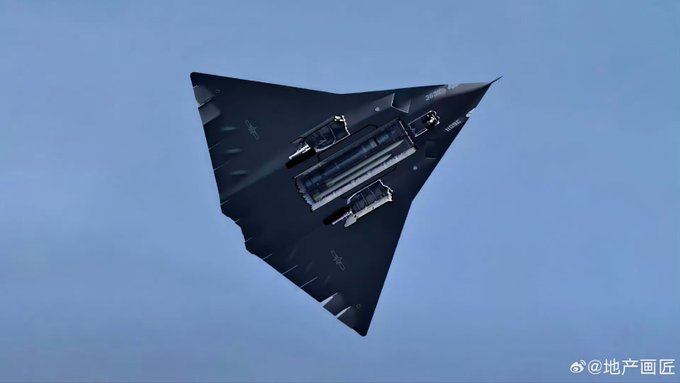Kazi Abul Monsur, Journalist#
While influential nations are fiercely competing in fifth-generation defense aviation technology, China, the “Red Giant,” has surprised the world by successfully flying a highly advanced fighter jet featuring sixth-generation capabilities. On December 26, 2024, China’s Chengdu Corporation, a defense aviation manufacturer, released several images and videos of a mysterious, tailless, delta-wing aircraft (J-36), which has already created a global sensation.
Although the Chinese government has not officially disclosed details, the test flight of this sixth-generation stealth fighter jet has sparked widespread discussions on social media. While its actual technological capabilities remain undisclosed, it is believed that China’s Chengdu Corporation began working on a prototype stealth aircraft featuring sixth-generation capabilities in secret as early as 2017. However, it may take until 2030-2032 for this fighter jet to enter full operational service.
Meanwhile, the United States has also been conducting extensive research and testing on sixth-generation stealth aircraft prototypes for over a decade in secrecy. However, the U.S. has yet to officially unveil any such aircraft. In late 2023, Northrop Grumman Aviation Manufacturing Company marked the beginning of a new era by conducting a test flight of the future-generation B-21 Raider heavy strategic stealth bomber aircraft.
Mass production of the U.S.-developed B-21 Raider bomber aircraft is expected to commence by the end of 2025. The U.S. Air Force plans to replace its long-range B-2 Spirit bombers with around 100 or more B-21 Raider stealth bombers over the next decade. However, China has already stunned the world by successfully flying its sixth-generation, AI-enhanced, J-36 advanced stealth fighter jet.
It is worth noting that while many nations struggle to bring fifth-generation aerial systems into operational service, the U.S. achieved a breakthrough nearly 40 years ago. In 1983, the U.S. introduced the F-117 Nighthawk stealth aircraft, astonishing the world with its technological capabilities. Additionally, the U.S. has already deployed 187 F-22 Raptors and over 400 units of F-35A/B/C stealth fighter jets in three categories over the past decade.
Currently, alongside China’s J-20 and Russia’s Su-57 fifth-generation fighter jets, the U.S. remains a leader in operational stealth aircraft. The Chinese Air Force reportedly has around 100 operational J-20 fighter jets. Moreover, China continues to work extensively on another lightweight stealth fighter jet series, the J-31 and J-35, even if these models have yet to enter service.
In addition to the U.S., China, and Russia, countries such as Turkey, India, the United Kingdom, Japan, South Korea, and Iran are striving to design and develop fifth-generation or next-generation fighter jets. However, these nations remain in the early stages of research and development. Meanwhile, the competition between the U.S. and China in designing and producing fifth- and sixth-generation technology aircraft has intensified, leaving other powerful nations in the West as mere spectators.
In 2024, Turkey successfully completed the first flight test of its next-generation “Kağan” fighter jet, while South Korea achieved a similar milestone with its KF-21 advanced light combat aircraft prototype. However, these aircraft may not enter operational service until 2030. Furthermore, countries like Turkey, India, Iran, and South Korea have yet to develop the technological capability to design and manufacture the highly dedicated engines crucial for stealth-capable and next-generation fighter jets.
Source: Wikipedia, Bulgarian Military, Asia Times.



মন্তব্যসমূহ বন্ধ করা হয়.